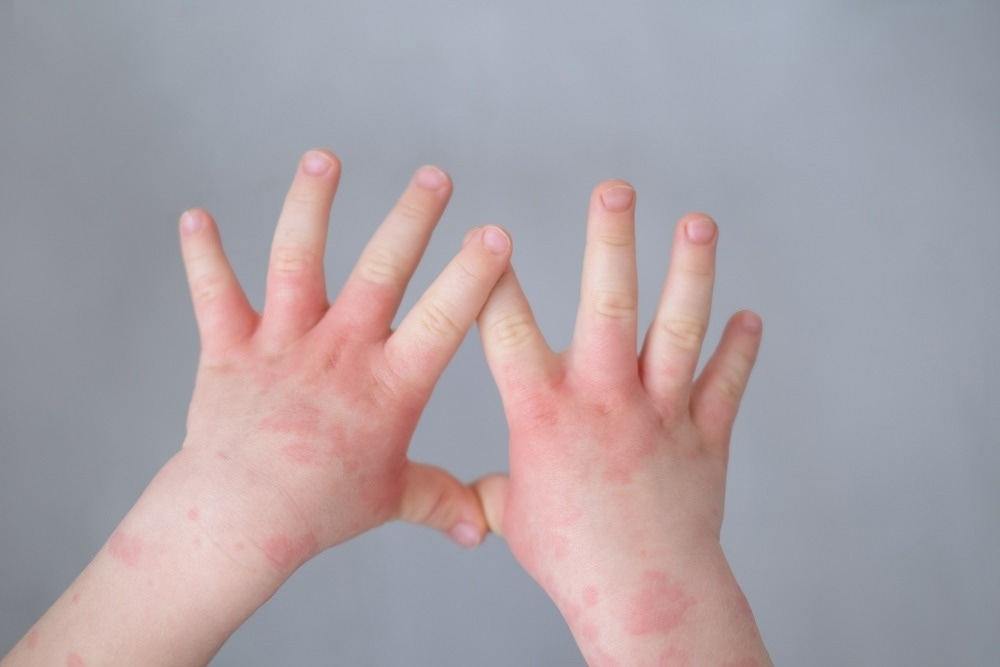In a recent study published in JAMA Network Open, a group of researchers compared the risk of hospitalization and emergency department presentation for immune-related conditions in children with and without prenatal opioid exposure (POE).
Background
Opioids are significant in fetal development, impacting various physiological processes. The use of exogenous opioids during pregnancy can disrupt these delicate processes, affecting multiple body systems, notably the immune system. This interaction raises concerns about the potential long-term health consequences for children exposed to opioids prenatally.
Understanding how POE influences immune system development and function is crucial, given the increasing prevalence of opioid use during pregnancy. Further research is needed to understand how the pharmacokinetics and pharmacodynamics of different opioids affect fetal immune system development and inflammatory responses, as well as to investigate the association of POE with autoimmune conditions.
About the study
The present study identified eligible pregnant women and their children from the Midwives Notification System (MNS). Data for children were obtained from the Hospital Morbidity Data Collection, the Emergency Department (ED) Data Collection, and the Western Australia Death Register. Data for pregnant women came from the Monitoring of Drugs of Dependence System, which tracks Schedule 8 medicines dispensing in Western Australia, including various opioids. However, this system does not include lower schedule opioids such as low-dose codeine or tramadol.
Neonates were classified as having POE if they had two or more prescriptions totaling 40 units or more dispensed during pregnancy. This classification was based on their birth date and estimated gestation length. Hospital and ED records were linked to identify diagnoses of interest.
For each hospital admission, a primary diagnosis and up to 20 contributing codiagnoses could be recorded. In the case of ED visits, only one diagnosis was assigned. Mortality data helped in censoring the follow-up time. Diagnoses for both hospital and ED data used the International Statistical Classification of Diseases and Related Health Problems, Tenth Revision, Australian Modification. Infection diagnoses followed Videholm et al.’s methodology, while codes for autoimmune conditions were compiled from multiple studies.
The analysis involved logistic regression for perinatal conditions, such as infections, eczema, and dermatitis, diagnosed within 28 days of birth. Both univariable and multivariable models were used, with the latter adjusted for factors like preterm birth and low birth weight.
Study results
The study encompassed 401,462 children, of which 1,656 (0.4%) had POE. The average gestational age of this group was 37.7 weeks, with a nearly even gender distribution of 50.5% female and 49.5% male. The study explored the relationship between POE and various immune-related conditions in children, including infections and conditions associated with an overactive immune system, such as eczema, allergy, asthma, anaphylaxis, and autoimmune diseases. These conditions were diagnosed before the age of 5 or by June 30, 2020. The primary outcomes measured were hospital admissions and emergency department presentations for these conditions.
The research found a significant association between POE and an increased risk of perinatal infection. This association remained robust after adjusting for various factors. However, POE was not found to increase the risk of autoimmune conditions. In the POE group, fewer than 0.3% of children were hospitalized or presented to the emergency department before age 5 with an autoimmune disease. This percentage was comparable to that in the non-exposed group, where approximately 0.3% of children were diagnosed with autoimmune conditions.
The results indicate a variability in the incidence of hospitalizations and emergency department presentations for immune-related conditions among children with POE in Western Australia. The presence of neonatal abstinence syndrome (NAS) and the type of opioids involved may have influenced the association between POE and specific immune-related conditions. The findings underscore the importance of understanding the potential implications of prenatal exposure to prescription opioids on children’s immune health, especially given the complex interplay of factors involved in these health outcomes.
Conclusions
This cohort study revealed that POE in Western Australia was linked to higher hospitalizations and emergency department visits for immune-related conditions, with variability among conditions. The study highlighted the influence of NAS and opioid types on specific immune conditions. Notably, 14.1% of pregnancies involve POE, and 0.8% of neonates experience NAS.
POE increased the risk of infection, eczema, and dermatitis, especially during the perinatal period, with NAS playing a significant role. Research showed reduced neutrophils and inflammatory cytokines in POE neonates, potentially increasing infection susceptibility.
The study linked POE to increased risks of eczema, dermatitis, asthma, and infections in neonates, highlighting the need for further research on POE’s effects on neonatal immune health.
